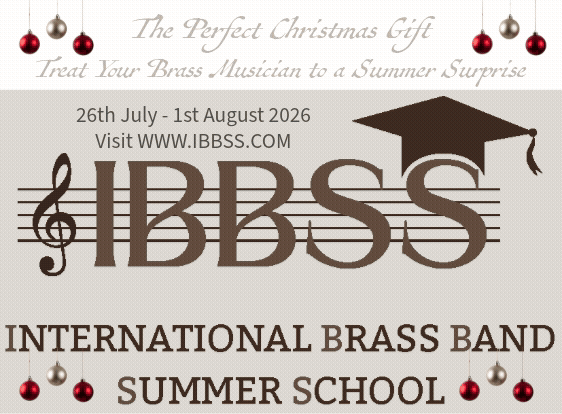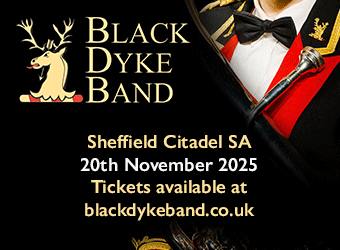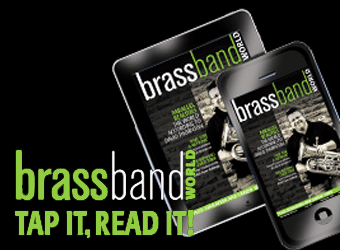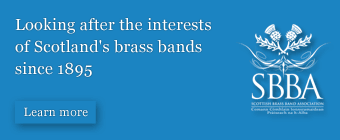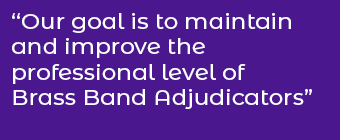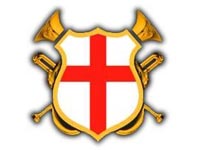 Nine bands, eight different own choice pieces.
Nine bands, eight different own choice pieces.
As always, the guessing games have begun: Who will play what?
Brain surgeons
Given the choices that have been published, it doesn’t take a brain surgeon to work out just who might have decided to perform ‘Vienna Nights’ (Wilby); ‘Concerto Grosso’ (Bourgeois); ‘Titan’s Progress’ (Pallhuber); ‘Music of the Spheres’ (Sparke); ‘The Legend of King Arthur’ (Meechan); ‘…Dove Descending’ (Wilby); ‘Spiriti’ (Doss) and ‘Symphony of Colours’ (Dobson) – but there aren’t that many brain surgeons out there are there now?
We can confirm however that two bands will play Philip Wilby’s ‘Vienna Nights’, and that Peter Meechan’s work is a piece about King Arthur and not King Alfred, the bloke who allegedly burnt the cakes, as quoted on the BFBB website.
40 times
Of the pieces, six have been used no less than 40 times as own choice selections at the European Championships, whilst one (‘Spiriti’) has been chosen as the European test piece itself in 2010.
Three have never been performed in a contesting environment in the UK (‘Spiriti’, ‘The Legend of King Arthur’ and ‘Symphony of Colours’) whilst three have been chosen as British Open test pieces (‘Vienna Nights’, ‘Titan’s Progress’ and ‘…Dove Descending’).
Plenty for the bands to get their teeth into then – and plenty of great music for the judges and the audience to enjoy.
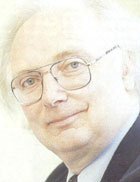 Vienna Nights - Philip Wilby
Vienna Nights - Philip Wilby
Philip Wilby's masterful fantasy on Mozart's Piano Sonata in A, K331 is arguably his finest work for brass band and will become an instant classic of the genre.
No other composer for brass could so successfully bring together two such diverse strands of compositional matter and architecture into one coherent symbiotic relationship like he has done here.
It is a breathtaking achievement of subtle mastery for Wilby has achieved the musical equivalent of turning base metal into pure gold. This is brass band compositional alchemy, and the result is quite startling.
The key is perhaps found in the subtitle to ‘Vienna Nights' itself.
Wilby calls it a ‘fantasy' which allows him the scope to develop his own thoughts and themes, structures and ideas without ever losing the purity of the original thematic material.
It is not an arrangement, realization, transcription of straight copy and paste job of the original with added on bits. If it were, it would have been a disaster.
What we get therefore is a classically structured piece in Sonata form where the germ of the original musical thought is developed without ever changing its historical DNA.
The Mozart music that forms the basis of the work is untouched and allowed to stand alone in all its glory, however brilliantly Wilby surrounds it with his kaleidoscopic array of inspired personal ideas.
It is therefore a piece that delineates the dichotomies between the two composers to the full - the almost simplistic beauty of Sonata and the joie-de-vivre of the Turkish Rondo allied to the intervening more muscular and complex layers of Wilby and his own homage to the 12 tone harmonics of Schoenberg.
The result as we have said, is quite something indeed.
The piece, played in one continuous movement is broken into the sonata form: The first entitled ‘Freud's Dreams' is itself homage to the great thinker and father of psychoanalysis.
This short introductory section leads to part 2 – ‘Variations' which itself is broken into a series of continuous variations on the Mozart theme from the Piano Sonata.
The nine mini variations cover just about every aspect of musical development you can think of, but always at their core is a pure circulatory bloodline, like a series of veins and arteries connecting every musical strand to the Mozart heart.
The third section is marked ‘Scena and Notturno' and is the most operatic in style and content before that itself sets the scene for the finale.
This is the romp of the ‘Finale Alla Turca' brought to life with an injection of pace that would leave the sprinter Marion Jones in her tracks.
This is still very much Mozart, but Mozart on a diet of Red Bull chasers - it's wickedly joyful, devilishly difficult and quite amazing to listen too (and we suspect to play).
Iwan Fox
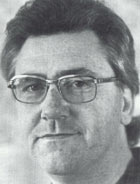 Concerto Grosso: Opus 61A - Derek Bourgeois
Concerto Grosso: Opus 61A - Derek Bourgeois
'Concerto Grosso' was written by the composer as far back as 1979, and was originally not a full brass band composition.
The initial piece was in fact written for the Philip Jones Brass Ensemble, a ten-piece made up of four trumpets, 1 French horn, 4 trombones and a tuba and was written especially for Philip Jones' farewell concert.
Bourgeois was at that time the Professional Musical Director of the Sun Life Band in Bristol and when in 1982 the band was asked to perform on the BBC radio programme "Bandstand" the composer took the opportunity of re-scoring the work for full band.
Although an immense "tour de force" the composer believes it to be within the capabilities of most top class Championship bands, although he believes that organisers of the major contests have been reticent to use the piece due to its length – it is 20 minutes long.
The term ‘Concerto Grosso’ is used by the composer in the baroque sense as throughout the work much is made of smaller ensembles featured against a larger accompanying background.
Written in three main parts it is played as a continuous piece and explores in each of its sections material that ranges from the technically brilliant to the sombre, beautiful melodic yet with a real sense of fun and wit.
Each of the major solo players within a band has material that extends their capabilities to the limit whilst the ensemble is tested to the full.
Influences of jazz, blues an even a Charles Ives inspired rumba are heard throughout although the initial motto theme announced at the outset returns time and time again throughout the piece.
It remains today perhaps the most vividly brilliant of brass band compositions.
Iwan Fox
 Music of the Spheres - Philip Sparke
Music of the Spheres - Philip Sparke
Music of the Spheres was written late 2003/early 2004 and reflects the composer's fascination with the origins of the universe and deep space in general.
The title comes from a theory, formulated by Pythagoras, that the cosmos was ruled by the same laws he had discovered that govern the ratios of note frequencies of the musical scale. (‘Harmonia' in Ancient Greek, which means scale or tuning rather than harmony – Greek music was monophonic).
He also believed that these ratios corresponded to the distances of the six known planets from the sun and that the planets each produced a musical note which combined to weave a continuous heavenly melody (which, unfortunately, we humans cannot hear). In this work, these six notes form the basis of the sections MUSIC OF THE SPHERES and HARMONIA.
The pieces opens with a horn solo called t = 0, a name given by some scientists to the moment of the Big Bang when time and space were created, and this is followed by a depiction of the BIG BANG itself, as the entire universe bursts out from a single point.
A slower section follows called THE LONELY PLANET which is a meditation on the incredible and unlikely set of circumstances, which led to the creation of the Earth as a planet that can support life, and the constant search for other civilisations elsewhere in the universe.
ASTEROIDS AND SHOOTING STARS depicts both the benign and dangerous objects that are flying through space and which constantly threaten our planet, and the piece ends with THE UNKNOWN, leaving in question whether our continually expanding exploration of the universe will eventually lead to enlightenment or destruction.
Philip Sparke
 ..Dove Descending - Philip Wilby
..Dove Descending - Philip Wilby
...Dove Descending was written for the British Open Brass Band Championships of 1999, which was won by Yorkshire Building Society conducted by David King.
The title is taken from the T.S. Eliot poem "Little Gidding" and is described by the composer as a Sonata in open tones.
The performance requires a standard seating arrangement but in addition requires two groups of fanfare stands for ten cornet players which are to be placed in a five right/five left formation, plus three extra stands for trombones placed at a distance from the band and from each other.
There is an optional organ part as well as the requirement to use a CD player.
A seating plan is issued for the performing band to adhere to.
In essence the work is divided into two main parts - the first which the composer notes contains three elements - a heraldic fanfare, a musical picture of Time composed in the open tones of the harmonic series and then the Old Testament description of the coming of Christ.
The second part by contrast is a beautiful solo prayer entitled Nativity, which finally leads into a resolution and return of the coming of Christ.
The piece has proved to be immensely popular with both bands and audiences, even though it is a very long work in terms of time.
It is though a very demanding work that only the very best bands can really make a true performance of.
Iwan Fox
 A Symphony of Colours - Simon Dobson
A Symphony of Colours - Simon Dobson
The title of my work ‘A Symphony of Colours’ is in reference to the rare condition Synesthesia (literally meaning ‘crossed’ or ‘together senses’), in which people can see colours or smell scent in response to hearing music.
One of the most famous people who had this condition was the French composer Olivier Messiaen, to whom this piece is a homage.
My work begins with a sideways glance at Messiaen’s great organ work ‘L’ascention’– in particular the fanfare-like third movement entitled ‘Transports de joie d'une âme devant la gloire du Christ qui est la sienne (‘Ecstasies of a soul before the glory of Christ, which is its own glory’), usually just known as ‘Transports de joie’.
This movement, ‘Joy’, seeks to show the solace that Messiaen seemed to find in his own spiritual beliefs.
The second movement is a journey through my own perception of synesthesia (which since my childhood I have myself experienced to some degree, before I knew what it was).
‘Chroma’ flows through individually subtitled movements charting the various sounds and moods that I associate with different keys and colours, along the way we visit Messiaen infused harmonies, dream-like states and twisted jazz.
A ‘white noise’ choral leads us into the third, percussion lead movement.
‘Endless time’, is a reflection upon perhaps Messiaen’s most famous work ‘Quatre pour la fin du temps’ (Quartet for the end of time), and strives to show a sense of serenity far from the reality of the terrifying subject matter of Messiaen’s own work.
The works title was supposed to convey feelings about a moment when time didn’t exist and hung still, rather than ended.
My movement contains minimalist moments as well as brooding Messiaenic harmonies to show the eternal nature of humanity’s spirit of endurance.
The final movement of the work is in response to Messiaen’s ‘L’ascention’.
In this piece he charts Christ’s ascension to Heaven. In my conclusion, ‘The Ascent’, I seek to portray the furthering evolution and growth of the human spirit.
During this movement I show distorted glimpses of Messiaen’s ‘Turangalila Symphony’, as well as more dissonant and foreboding figures to show that the path is not easy.
The work ends with a grand organ-like finale, thundering to a close redolent of Messiaen’s own organ work and portraying humanity’s striving for betterment.
Simon Dobson 2011
 Titan’s Progress - Hermann Pallhuber (written as John P Alliston)
Titan’s Progress - Hermann Pallhuber (written as John P Alliston)
Style and attention to detail are everything in Hermann Pallhuber’s 'Titan’s Progress'.
Loaded with borrowings from perhaps one of the greatest symphonists of all time, Gustav Mahler, this was Pallhuber’s first foray into composing for the British-style brass band.
The origin of Pallhuber’s title is Mahler’s '1st Symphony.'
According to Mahler’s friend, Natalie Bauer-Lechner, the symphony was to be understood as an expression of the ways in which a strong, heroic person confronts and struggles with the problems of life.
Mahler’s 1st Symphony is a whistle-stop tour of the life of a heroic individual: it is from this concept that Hermann Pallhuber’s piece seems to take off.
Whereas Mahler saw Jean Paul’s novel as a capstone for his symphony, Hermann Pallhuber has used it as a structuring tool, drawing on much of the material from the novel itself; in this sense it is ‘programmatic’.
The piece opens dramatically with a short fanfare-like phrase, followed by a section marked by contrast between merciless aggression and dignified sonority.
A more playful giocoso section follows, before the drama really begins at ‘presto’.
A sustained, almost-lyrical section follows, before we are plunged back into the agitated world we thought we’d left behind some moments ago.
Pallhuber’s next section picks up the humorous baton from the preceding section’s final bars, launching us into a ‘farandole’.
A calmer section with a beautiful euphonium melody follows, interspersed with ‘cheeky’ solos from the flugelhorn and baritone.
A tricky section with a playful soprano solo comes next, with a number of awkward time signatures and shifts in metre.
The closing section of this mammoth work commences with scurrying figures moving up through the band from the basses, building and building until the accompaniment dynamic suddenly drops and triumphant cornets emerge with the chorale theme we heard earlier.
Pallhuber reminds us of all the key Mahler themes he’s borrowed throughout the piece in this finale – and everyone seems to be involved.
A massive ‘allargando’ leads us into the final flourishes and fanfares before the enormous final chord rounds off this exciting, complex work.
Adapted from the original written for 4BR by Chris Davies.
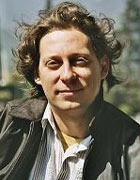 Spiriti – Thomas Doss
Spiriti – Thomas Doss
With his latest work, ‘Spiriti’, Austrian composer Thomas Doss appears to revel in the creation of his own form of musical miasma.
The 2010 European test piece is a quite remarkable composition of innovative thought processes – an exploration of the margins of brass band possibilities; yet on first hearing it appears to come from the pen of a man imbued with extra sensory illusory perceptions.
It’s a wonderful piece of inventive brass writing (and rock hard too), where deliciously, nothing is quite what it seems.
Doss tells us that the work is also imbued with the spirit of Anton Bruckner, yet it is not until seven bars before the very end of the piece that the one direct quote from his ‘Fifth Symphony’ is heard.
Bruckner it seems is a difficult man to pin down – even in the spirit world.
He’s there all right, but it would take a hi tech ouija board and Doris Stokes on tip top form to make an early connection with him before bar 363 (of 369) in the piece. The composer creates a musical spirit illusion that would beat Derek Ancora into a tin hat.
What we do hear – almost from the first bar to the last, is the body (as well as the spirit) of another well known composer – Johann Sebastian Bach, and his, famous chorale; ‘Fur deinen Thron tret’ich hiermit’ ; better known perhaps ‘All people that on earth do dwell’ – although the illusion Doss creates is that of a world of the surreal – one imbued with that miasma of the incredible.
Where else would you find tempo markings that although sober enough in print, make some of the technical filigree work almost impossible to play with precise clarity even by the finest players in Europe: Yet they still make perfect sense in terms of musicality.
(The piece is around 15 and half minutes long if played to the letter of the law – but with some bands it could be stretched to 18 minutes plus)
And what about effects such as humming cornet players (and not in the Puccini sense) that on first glance appears an easy ‘trick’ to pull off, but on closer analysis is pitched in such a way that bands with few female voices will need a supply of extra tight Y-fronts or falsetto back row cornet players to make work.
Doss has a masterful grasp of the unfocussed musical lens.
He explored a form of shimmering heat haze in his recent ‘Sketches from Nowhere’ – an effect not unlike that seen at the beginning of the film ‘Lawrence of Arabia’ – with the eye taking an age to finally find its optical focus point on Omar Shariff as he rides towards the camera on his camel.
No sketches of Arabia here however, but the Vaseline smeared lens is at work again – primarily through the use of perfectly tapered glissandi on trombones and more subtly, on cornets – a malleable bending of pitch that creates an intriguing dissonance.
Add to this the composer’s innovative use of muted textures (the gloopy sound of the bucket mutes on the euph are quite mesmerising), which allows him to play with your senses of perception, even though the kernel of that simple Bach chorale underpins everything.
He revels in that musical miasma – the ciphers and phantoms of little ideas created and exposed, denied and hidden, through panoply of differing styles.
Dirty edged blues, ‘Heavy’ rock, a touch of Baroque and gypsy, brass band hymnals, minimalism, edgy ensemble – even quasi religious retrospection – although you do wonder if Doss is really leading you down that particular ‘et spiritus sancti’ path with his tongue placed firmly in his cheek.
By its close the abstract apparitions come thrillingly together – as if the earth dwellers have finally worked out what the whole ‘Doss Matrix’ has been all about – even if the composer still manages to play with our mental imagery by evoking the mind’s eye picture of the two old ‘masters’ playing a sort of duet on the local church organ as the great unwashed celebrate their reappearance from the realms of the ‘choir invisible’ by ringing out the church bells.
We should all raise a glass to the composer. He has delivered a quite remarkable piece of brass band composition.
‘Spiriti’ is a wonderful work from a wonderfully inventive musical mind – although it must be a noggin that has a touch of the weird and wonderful lurking in its darkest recesses.
And given what we can look forward to here on the weekend, that can only be a good thing.
Iwan Fox
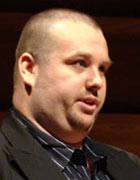 The Legend of King Arthur – Dr Peter Meechan
The Legend of King Arthur – Dr Peter Meechan
King Arthur is the subject of many tales, stories, myths and legends – from his ascension to the throne by pulling the sword from the stone, his courageous battles with his fellow Knights of the Round Table, to his ultimately tragic love for Guinevere.
The Legend of King Arthur is a musical portrayal of some of the most important moments in the legend.
The opening of the work – a rock inspired overture – is a reference to Arthur’s final resting place (at least, so some legends have it!), the modern day Glastonbury (Avalon in the legend), and it is in this opening that we hear for Arthur’s theme.
This high octane opening gives way to a mysterious section – as Merlin (the mystical wizard) places in a stone a sword, upon which was inscribed “Whoso pulleth out this sword of this stone is the rightwise born king of all England”.
The music describes the mystical surroundings as each of the contenders for the throne take their turn – to no avail – and with a return to the original theme, we hear Arthur pull the sword from the stone, to become King of England.
Next we hear a depiction of Arthur’s greatest victory in battle – The Battle of Mount Badon.
He finally defeated the Saxon invaders of Britain – over 900 Saxons perished – and the victory brought about an extended period of peace.
Arthur is portrayed as brave, bold and confident as he and his Knights end years of invasion.
The penultimate section of the work tells the tale of Arthur’s tragic love for Guinevere – his traitorous wife, who through her infidelity with Sir Lancelot (Arthur’s most trusted Knight), ultimately leads Arthur in to his final battle with his nephew, Mordred.
We hear the final bitter battle, which eventually ends with only Arthur and Mordred fighting.
Arthur is wounded, fatally, by his nephew –at which point we hear with a sudden and dramatic sounding of Arthur’s theme – and is taken to Avalon to die.
The Legend of King Arthur is dedicated to Michael Bach and Brass Band Burgermusik Luzern, who commissioned the work.
Dr Peter Meechan 2010



